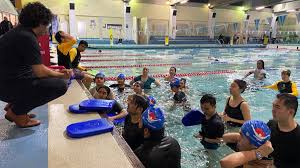Every year, hundreds of Australians find themselves in risky situations around water—sometimes in their own backyards. It’s not always big waves or strong currents that cause trouble. Often, it’s a simple lack of training or awareness. That’s where a solid water safety course comes in—especially one that reaches Level 2.
Whether you’re a parent, a teacher, or someone who loves the water, understanding the role and depth of Level 2 training can mean the difference between confidence and confusion in aquatic environments.
What is a Water Safety Course?
At its core, a water safety course teaches people how to stay safe around water. It’s more than just learning to swim—it’s about understanding how to avoid danger, respond to emergencies, and build practical skills for life.
Courses vary in level, often structured from beginner through to advanced. They cover topics like:
- Basic survival techniques
- Drowning prevention
- Rescue strategies
- Emergency response
Each level builds upon the last, reinforcing key safety principles and introducing age- or role-specific training. For example, a course for a Year 3 student will look different to one meant for a schoolteacher supervising a swimming carnival.
What Makes Level 2 Water Safety Important?
Level 2 represents a fundamental step beyond simply staying afloat. It’s about applied safety in real-world scenarios.
A Level 2 water safety course focuses on:
- Confident movement through water (not necessarily advanced strokes, but safe and controlled travel)
- Recognising safe vs unsafe aquatic conditions
- Understanding personal limits and risk factors
- Performing basic rescues—like reaching or throwing aids
- Calling for help and initiating emergency responses
It’s an essential building block for anyone looking to support others around water, especially in schools, clubs, and community settings.
Why Every Australian Should Consider This Training
Australia’s lifestyle is heavily tied to water—beaches, pools, rivers, lakes. Yet, despite this, drownings continue to claim lives every year. According to the Royal Life Saving National Drowning Report, over 280 people drowned in 2023 alone. Many incidents involved people who never intended to swim but found themselves in the water unexpectedly.
Level 2 training teaches situational awareness. You don’t have to be in the ocean to benefit. Think about:
- Parents supervising kids in a backyard pool
- Hikers crossing creeks or rivers
- School teachers on excursions
- Lifesavers in training
Everyone gains from knowing how to think, act, and assist around water.
Real-Life Scenarios That Highlight Level 2 Skills
Let’s bring it home with a few examples.
1. The Backyard Pool Incident
Nine-year-old Mia slipped into the deep end while chasing a ball. Her older brother Liam, 12, didn’t panic. Thanks to his training, he stayed out of the pool, grabbed a float, and extended it from the side. Mia held on. No injuries—just a good story and a very relieved mum.
2. Camp Excursion Gone Sideways
A school group visiting a national park stopped at a local river. Despite teacher supervision, one student slipped on a wet rock and fell in. Quick-thinking peers—who had completed a Level 2 water safety course—formed a human chain, safely helping their mate out before adults intervened.
In both cases, no professional rescuer was on-site. But the training held.
How to Choose the Right Water Safety Course
Not all courses are equal. A good program will:
- Be structured across multiple skill levels
- Align with national education or safety standards
- Include both theory and practical components
- Provide pathways for further training or instructor development
You’ll find a strong emphasis on life-saving fundamentals, safety habits, and peer support. And yes, there should be assessments—because in real emergencies, you want to know your training holds up.
If you’re ready to learn how Level 2 builds essential life skills, check out this structured and nationally recognised water safety course.
Who Should Take a Level 2 Course?
The short answer: anyone who spends time near water.
But specifically, it’s ideal for:
- Primary and secondary students
- Schoolteachers and childcare staff
- Camp instructors and outdoor leaders
- Sports coaches
- Swim school assistants
- Parents of young children
It also acts as a springboard into more advanced first-aid or aquatic teaching qualifications.
Explore how a water safety course can empower your role—whether personal or professional.
Skills That Go Beyond the Pool
Water safety training isn’t just about rescue—it’s about leadership, quick thinking, and emotional regulation. It teaches people to:
- Stay calm under pressure
- Work as a team
- Evaluate a situation before acting
- Communicate clearly in stressful environments
Those are valuable skills in all walks of life—not just around water.
If you’re ready to build confidence, protect others, and learn skills that last a lifetime, explore a water safety course and take the plunge into something truly worthwhile.
Final Thoughts
Level 2 water safety is more than a line in a certificate—it’s a mindset. One that can save lives. Whether you’re a parent, student, teacher, or casual swimmer, these lessons help create safer communities across Australia.
So take the time, invest the effort, and encourage others to do the same. One course can make all the difference.

